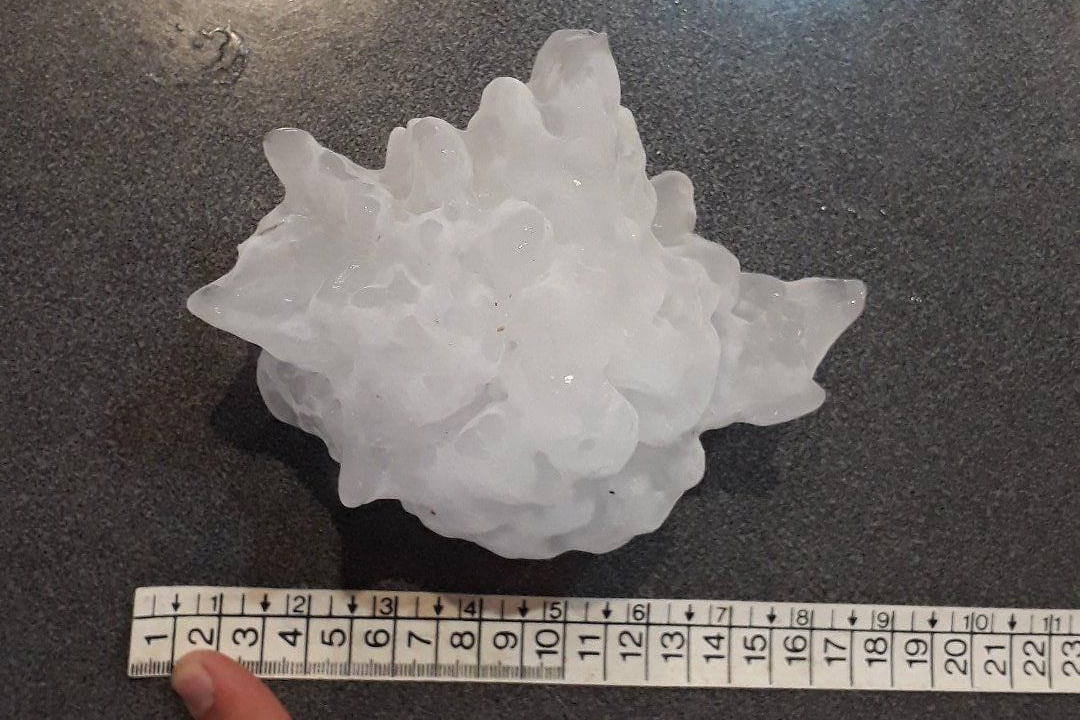2024-10-22 ペンシルベニア州立大学(PennState)

A gargantuan hailstone that fell in Argentina may have set a world record, according to researchers. Credit: Victoria Druetta . All Rights Reserved.
<関連情報>
- https://www.psu.edu/news/earth-and-mineral-sciences/story/lumpy-bumpy-hail-realistic-hail-shapes-may-improve-modeling-severe
- https://journals.ametsoc.org/view/journals/atsc/aop/JAS-D-23-0231.1/JAS-D-23-0231.1.xml
非球状の雹のモデル化 Modeling non-spherical hailstones
Yuzhu Lin,Matthew R. Kumjian,Joshua Soderholm, and Ian Giammanco
Journal of the Atmospheric Sciences Published:31 Jul 2024
DOI:https://doi.org/10.1175/JAS-D-23-0231.1
Abstract
Hail research and forecasting models necessarily involve explicit or implicit – and uncertain – physical assumptions regarding hailstones’ shape, tumbling behavior, fallspeed, and thermal energy transfer. Whereas most models assume spherical hailstones, we relax this assumption by using hailstone shape data from field observations to establish empirical size-shape relationships with reasonable degrees of randomness considering hailstones’ natural shape variability, capturing the observed distribution of tri-axial ellipsoidal shapes. We also incorporate explicit, random tumbling of individual hailstones during their growth to simulate their free-falling behavior and the resultant changes in cross-sectional area (which affects growth by hydrometeor collection.) These physical attributes are incorporated in calculating hailstones’ fallspeeds, using either empirical or analytical relationships based on each hailstone’s Best and Reynolds numbers. Options for drag coefficient modification are added to emulate hailstones’ rough surfaces (lobes), which then modifies their thermal energy and vapor exchange with the environment. We investigate how applying these physical assumptions about nonspherical hail into the Penn State hail growth trajectory model, coupled with Cloud Model 1 supercell simulations, impacts hail production, and examine the reasons behind the resulting variability in hail statistics. The choice of hailstone size-mass relation and fallspeed scheme have the strongest influence on hail sizes. Using non-spherical, tumbling hailstones reduces the number of large hailstones produced. Applying shape-specific thermal energy transfer coefficients subtly increases sizes; the effects of lobes vary depending on the fallspeed scheme used. These physical assumptions, although adding complexity to modeling, can be parameterized efficiently and potentially used in microphysics schemes.


